
All of us have seen and used a simple electric fan. While thinking about a fan an image comes to our mind, which is a fan with rotating blades. But have we ever imagined a fan without blades? Most of us say ‘No’. Now it is possible, but how. That’s why we are here to explore it.
What is a Bladeless fan?
A bladeless fan, as per their name, has no visible rotating blades and emits air from within a ring-like hollow circle. This fan has blades inside the base. In the first look, you would not expect to feel a breeze coming from the mounted hollow circle.

Bladeless fan
It generates strong airflow by using Air-multiplication technology and can generate a very impressive airflow within the room. An Air-multiplier is responsible to generate this Air-multiplication.
Units of Bladeless fan:
- Air-multiplier
- Control circuit
Air-multiplier:
For air multiplication, few scientific principles play an important role. Most of us have seen a vacuum cleaner that is being used in cleaning households. Air-multiplier is also a kind of vacuum cleaner that works in a reverse manner.
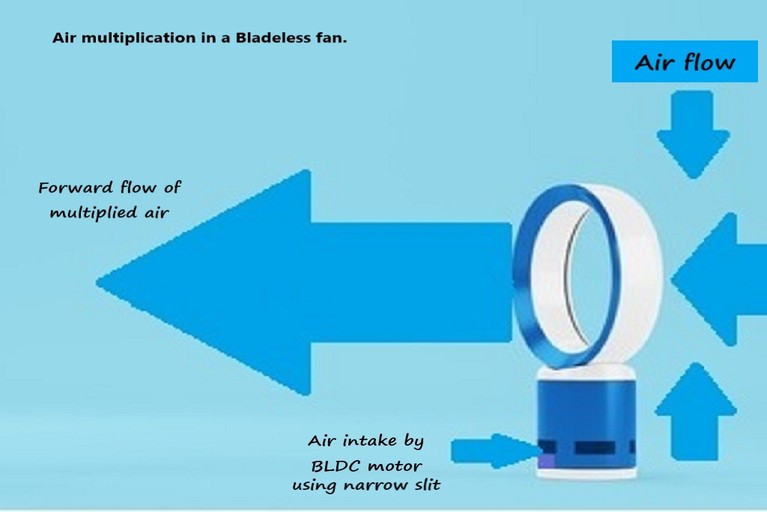
Air multiplication in bladeless fan
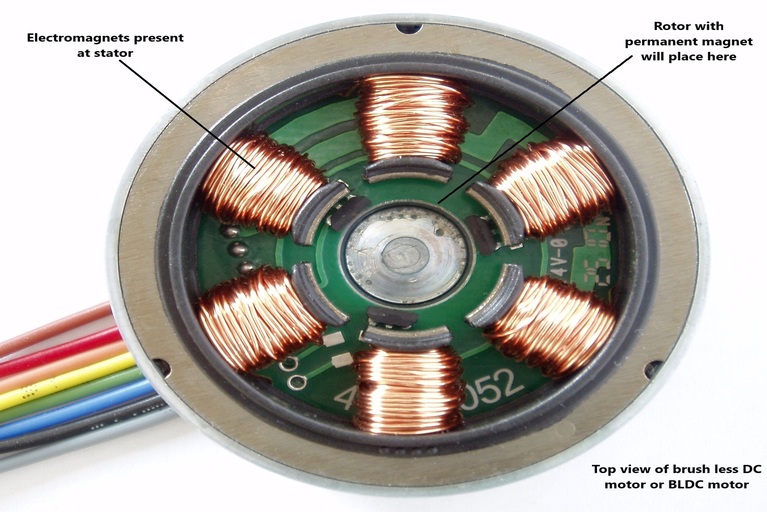
Stator winding of brushless DC motor
In a bladeless fan, Air-multiplier has made of the brushless electric motor or BLDC motor. Let’s have a little discussion on the brushless electric motor. In a typical DC motor, there are permanent magnets on the outside and a spinning armature on the inside. The permanent magnets are stationary, so they are called the stator. And the armature rotates, so it is known as the rotor. Here is a brushless DC motor (BLDC), the permanent magnets are present on the rotor and you move the electromagnets to the stator. Then when you supply power to the stator, that contains an electromagnet, it creates a magnetic field in the stature that attracts and repels the permanent magnets of the rotor. That’s how the BLDC motor works. Now, see the role of this BLDC motor in an Air-multiplier.
In a bladeless fan, Air-multiplier is present at the bottom. A small brushless electric motor runs a tiny fan with asymmetrically aligned blades that push air through a set of stationary blades that smooth the airflow. After that this air is directed towards the hollow-circle-like tube at the top of the device where it’s forced out of a circular narrow slit or opening running around the circle. At the base of the hollow circle, the openings are wide. But it narrows near the top of the hoop or circle, this structure provides the first step to the multiplication of air. The airflow induces the air behind the hollow circle to be pulled along too; this is the second step of air-multiplication. Air surrounding the edge of the hollow circle or hoop is drawn through in the same direction as the electrically propelled air.
Most of the manufacturers of bladeless fans are doing multiple changes in the design of the Air-multiplier to improve the quality of the breeze of this fan.
Control circuit:
This circuit unit is present in every bladeless fan. The control circuit mainly responsible to control the input power of the air-multiplier. It also provides a remote-controlled feature to every bladeless fan. It contains a high-frequency transformer, a few timer IC’s, voltage regulators, resistors, capacitors, and IR receivers to them remote controlled and much more.
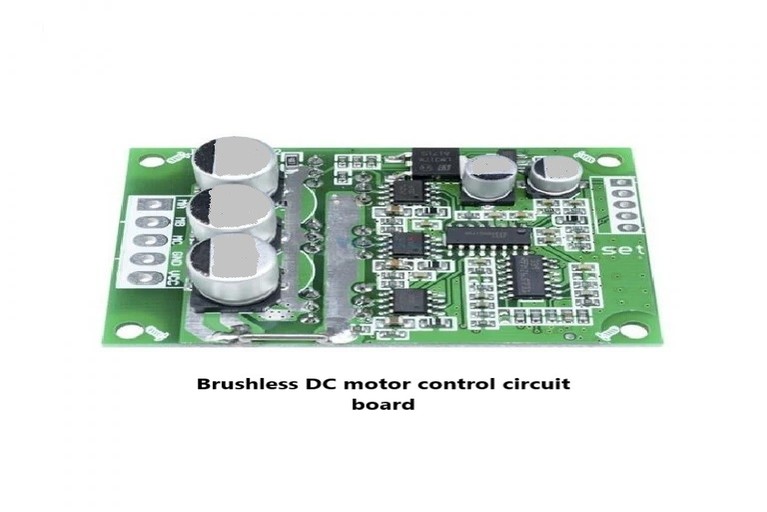
Control board for bladeless fan
Here high-frequency transformers and several voltage regulators are being used to provide power supply to Air-multiplier and IR receiver (Infrared Receiver).
Several timer IC’s are responsible to set the timing and speed limit of breezes. Whereas the IR receiver receives commands from the remote control and converts them into an electrical signal. And this electrical signal is being sent to pre-programmed IC’s to perform certain functions on the bladeless fan, like changing the speed of breezes, setting the period of speed, changing the direction of the wind, etc.
That’s how a bladeless fan works. In conclusion, we can say that a bladeless fan has blades but it is not directly responsible to generate powerful breezes.
Is a Bladeless fan better?
It is uncertain. But most of the manufacturers are doing their job perfectly. As of now, bladeless fans are safer to use because it does not contain long moving blades to generate breezes. A good quality bladeless fan is quieter, safer, and more powerful that uses less electricity. At present time bladeless fans have better look as compared to traditional fans.
Thanks for reading. See you soon with another exploration!


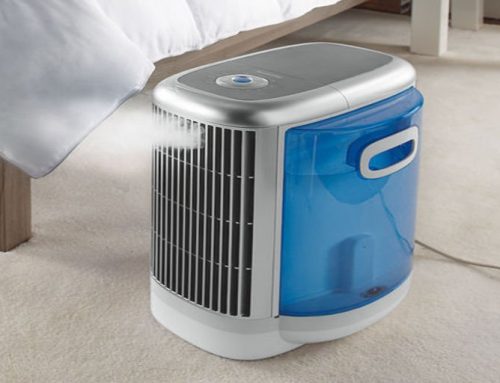
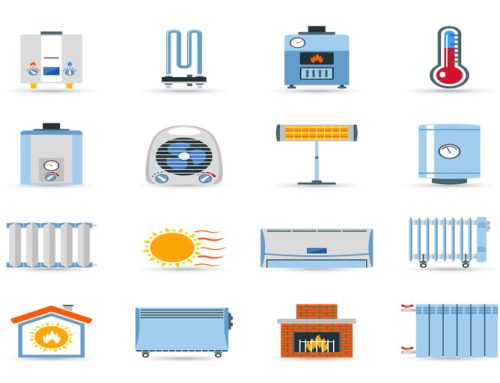
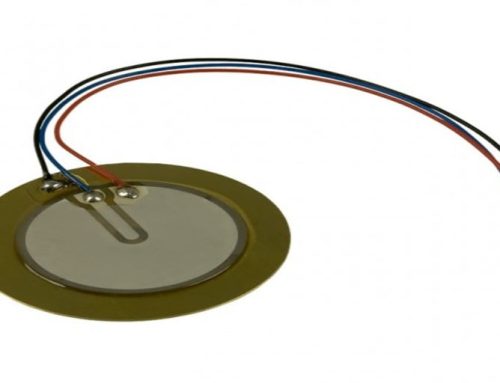

[…] response to the above points, BLDC motors (Brushless DC motors) are a very good option for air purifiers. These motors have high and low […]